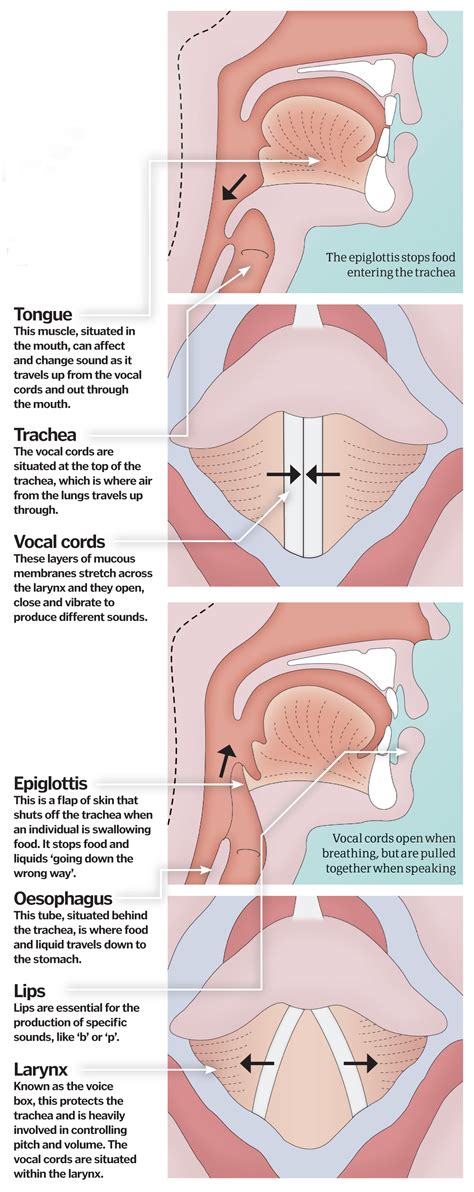The transition from a boy’s voice to a man’s deeper tone is one of the most distinctive markers of male puberty. This dramatic change is not merely a superficial alteration but a consequence of profound anatomical transformations within the larynx, commonly known as the voice box. Driven primarily by surges in testosterone, these structural modifications lead to a significant lowering of vocal pitch, distinguishing the adult male voice.
The Larynx: The Body’s Sound Producer
Before puberty, the male and female larynges are relatively similar in size and structure. The larynx is a complex organ made of cartilage, muscles, and ligaments, housing the vocal cords (also known as vocal folds). Sound is produced when air from the lungs passes through the vocal cords, causing them to vibrate. The pitch of the voice is determined by the length, thickness, and tension of these cords: shorter, thinner, and tighter cords produce higher pitches, while longer, thicker, and more relaxed cords produce lower pitches.

The Hormonal Catalyst: Testosterone
The primary driver behind laryngeal development during male puberty is the increase in androgen hormones, predominantly testosterone. As testosterone levels rise significantly, it acts on various tissues throughout the body, including the cartilage and muscles of the larynx. This hormonal surge initiates a growth spurt that is specific to the male larynx, setting it apart from its female counterpart.
Key Anatomical Changes in Detail
1. Significant Laryngeal Growth and Cartilage Enlargement
One of the most visible and substantial changes is the overall enlargement of the laryngeal cartilages. The thyroid cartilage, in particular, undergoes rapid and disproportionate growth. This cartilage forms the front and sides of the larynx. As it grows, it pushes forward and outward, creating the prominent bulge commonly known as the “Adam’s Apple.” This larger cartilaginous framework provides a greater internal space for the vocal cords to lengthen.

2. Vocal Cord Elongation and Thickening
The most critical change directly affecting vocal pitch is the lengthening and thickening of the vocal cords themselves. Before puberty, a boy’s vocal cords are relatively short and thin. During puberty, under the influence of testosterone, they can lengthen by up to 60% (from approximately 10-15mm to 17-25mm) and become considerably thicker. This elongation and increased mass directly lower the fundamental frequency at which they vibrate. Think of a guitar string: a longer, thicker string produces a lower note when plucked.

3. Development of Laryngeal Muscles
Accompanying the growth of cartilage and vocal cords, the intrinsic laryngeal muscles also develop and strengthen. These muscles are responsible for controlling the tension, length, and approximation of the vocal cords. Their enhanced development allows for greater control over the newly elongated and thickened cords, though some boys experience temporary voice cracking or instability as their muscles adapt to the new laryngeal configuration.
4. Changes in Laryngeal Position
There is also a slight downward repositioning of the entire larynx within the neck. While less dramatic than the growth of the cartilage and cords, this anatomical shift contributes to the overall resonance characteristics of the male voice, providing a larger resonating chamber.

The Acoustic Outcome: A Deeper Pitch
Collectively, these anatomical changes result in a significant drop in vocal pitch, typically by about an octave, translating to a much deeper voice. The increased length and thickness of the vocal cords mean they vibrate at a lower fundamental frequency. The enlarged laryngeal cavity also influences resonance, adding to the richness and depth of the sound. This process is gradual, often spanning several months or even a couple of years, which accounts for the temporary voice breaks and unpredictable pitch changes experienced during puberty.

Conclusion
The transformation of the male larynx during puberty is a remarkable example of hormone-driven anatomical development. The growth of the thyroid cartilage, the elongation and thickening of the vocal cords, and the maturation of laryngeal muscles all work in concert to reshape the vocal instrument. These specific and well-orchestrated changes culminate in the distinctively deeper and more resonant voice characteristic of adult males, a fundamental aspect of secondary sexual characteristics.




